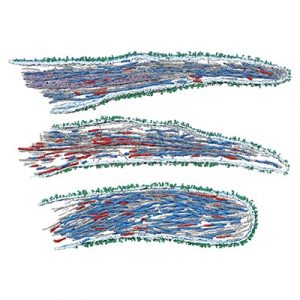 Instruct
InstructCryo-electron Tomography is a rapidly growing technique that can visualise cell organelles and biological macromolecules in their cellular context. Image processing algorithms allow the identification of the macromolecules of interest in the electron tomograms. Then, by extracting small subtomograms around those locations and identifying those similar particles, we may average them and recognise their different conformations. This latter process is called subtomogram averaging and has allowed solving a growing number of macromolecules with a resolution between 20-5A.
Instruct-ERIC Centre Spain, I2PC, is providing a virtual course on electron tomography. The course aims at providing a comprehensive overview of the whole image processing pipeline in Electron Tomography (ET) from the movie alignment of the tilt series, 3D reconstruction of the tomogram, particle identification, and subtomogram averaging. The I2PC has a long tradition of organising courses of image processing, with Instruct courses that have been heavily oversubscribed and had to be repeated twice in the same year to attend its demand. The length of the course is three days and a half.

Preventing possible traveling restrictions and seeing the previous virtual course’s successes, the whole course will be given online. An additional benefit of this circumstance is that the course can be recorded and stay as a permanent course in Instruct. Although the course is online, we will keep a close interaction with attendees. For this reason, we will limit the maximum number of attendees to 40.
The course is aimed at researchers of all levels wanting to adopt electron microscopy as one of the tools at their disposal for elucidating biological structures.
Expected impact for young researchers
CryoET is one of the most promising structural techniques, and it bridges the gap between structural and molecular biology and cell biology. Ph.D. students, as well as post-docs, will undoubtedly benefit from approaching this technique. Knowing it will open new doors to new positions worldwide.
Register for the course, and see the full speaker programme, here.